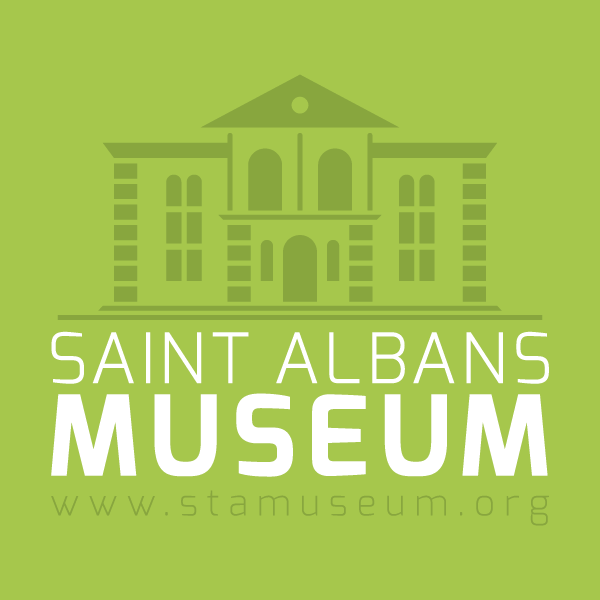Exhibits & Displays
Jump to:
Permanent Exhibits
Our nine main exhibit areas across two floors offer a little something for everybody.
Railroad Room
How did the Central Vermont Railway shape St. Albans? What did a day’s work look like for the conductors, engineers, and switchmen that kept trains full of people and vital goods moving through town?
Explore artifacts from over 100 years of railroad history, including a full-scale ticket seller’s office and a theater featuring railroad videos from Tell-Tale Productions.
Agriculture Room
What did everyday life look like for farming families? How has the role of agriculture in the culture and economy of Franklin County changed over time?
Learn about the people and processes that feed us. Delve into the fascinating history and science behind maple sugaring, dairy production, planting and plowing, and more.
Military Room
What role has St. Albans played in national and international conflicts? How have members of the armed forces served the local community throughout history?
Our collection of military artifacts spans from the Revolutionary War to the Gulf War, with a special focus on the Civil War and the St. Albans Raid of October 19, 1864.
Abenaki Heritage & St. Albans Bay History
How did the original inhabitants of this land live, and how do their descendants stay connected to their heritage? How do different groups of people interact with the land?
Explore life in St. Albans Bay from 3,000 years ago to the present day. Featuring a new display of archaeological artifacts prepared in collaboration with the U.S. Fish and Wildlife Service and members of the Abenaki Nation of Missisquoi.
Smith Family Room
Where do we see the legacy of philanthropy in St. Albans today? How did the early governors, industrialists, and businessmen of Vermont shape its future?
Featuring furniture, china, family portraits, and other artifacts from the Smith mansions, this room offers a rare peek into the everyday lives of St. Albans’s elite.
Historic Classroom
What was it like to be a student in St. Albans a century ago? How have graduates from St. Albans schools gone on to make an impact on local, state, and national history?
The museum building, which served as a school for over 100 years, has seen thousands of students pass through its halls. Sit at an antique desk, write on the slates, and flip through our books to get a taste of school days gone by.
Medical Room
How have the ways we cure the sick and heal the wounded changed over time? What does it mean to be a healthy community?
Explore artifacts and stories from hundreds of years of medical progress. Featured displays include Phineas Gage, Dr. Beaumont and Alexis St. Marin, and the actual set used for Norman Rockwell’s painting “The Family Doctor.”
Women’s Realm
What did the fight for women’s rights look like in different historical eras? What aspects of women’s lives have been traditionally overlooked or undervalued?
Our women’s suffrage exhibit ties the historical struggle for equal rights for women with the present day. Displays on quilting, embroidery and weaving also bring new light to the art forms long dismissed as “women’s work.”
Main Street St. Albans
What are the large and small businesses that have made an impact on life in St. Albans? When disaster strikes, how does the community rebuild?
Take a stroll down old “Main Street St. Albans” and explore the industries that built our community. Also featuring a display related to major fires throughout St. Albans history.
Special Exhibitions
We regularly host special traveling exhibitions from partner organizations and individuals.
2024 Season
Chwarelwyr – Quarrymen (on loan from the Slate Valley Museum) (link to external site)
Presented by Welsh photographer Carwyn Rhys Jones, Chwarelwyr (Quarrymen) tells the stories of five quarry workers. Through a series of portrait photographs and a short documentary film, Jones tracks the history, heritage, and legacy of quarrying in Wales.
Although the exhibit focuses on Welsh quarrymen, its relevance to northwestern Vermont is clear. Many small towns in Vermont and Wales alike were built by the quarrying industry, which has steadily declined for the past century. At the height of Vermont’s marble industry in the early 1900s, thousands of immigrants from Wales and other European countries arrived in Vermont to work in the quarries, and many of their descendants remain in the state to this day.
On display from May 24–August 2, 2024.
Crossroads: Change in Rural America (on loan from the Smithsonian Institution) (link to external site)
From 1900 to 2010, the number of Americans living in rural areas shrunk from 40% of the population to just 18%. How has rural America adapted to survive in the face of change, and what might these areas look like in the future?
Crossroads: Change in Rural America has been made possible in St. Albans by Vermont Humanities. Crossroads: Change in Rural America is part of Museum on Main Street, a collaboration between the Smithsonian Institution and state humanities councils nationwide. Support for Museum on Main Street has been provided by the United States Congress.
On display from August 23–October 6, 2024.
Past Years
Seeds of Renewal: Abenaki Agriculture from the Vermont Historical Society (2019, 2022) (link to external site)
The Last of the Hill Farms: Echoes of Vermont’s Past from the Vermont Folklife Center (2019) (link to external site)
Everywhere a Sign from the Vermont Historical Society (2018) (link to external site)
World War I and America from the Gilder-Lehrman Institute of American History (2018) (link to external site)
Alexander Hamilton: The Man Who Made Modern America from the Gilder-Lehrman Institute of American History (2017) (link to external site)











